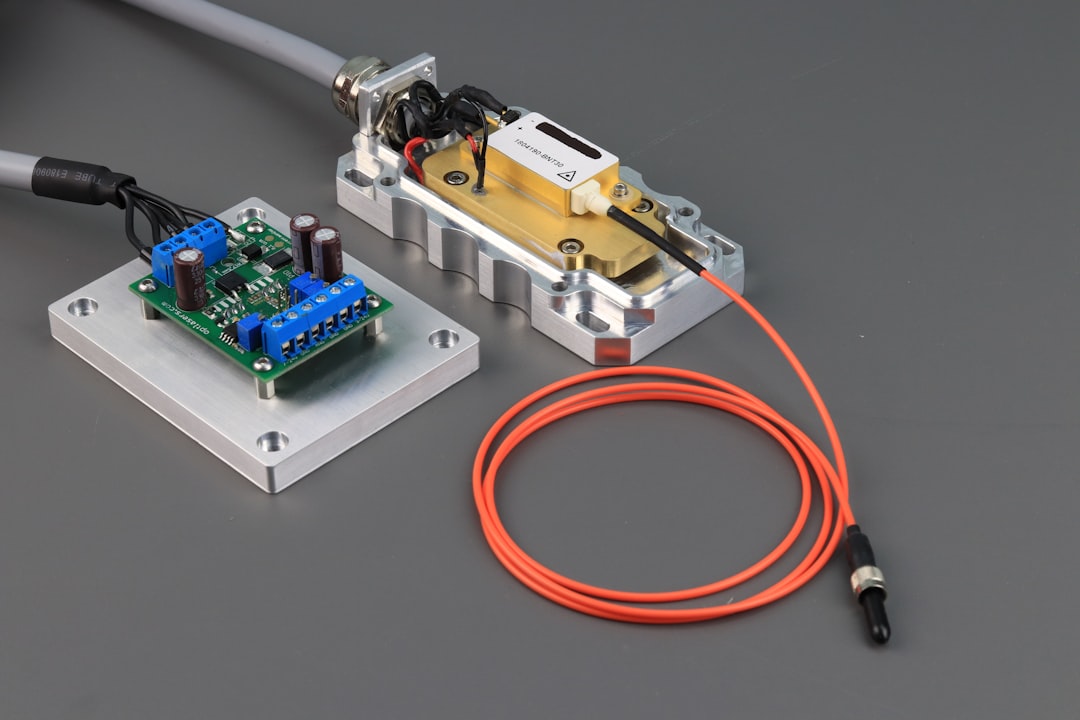Laser hair removal is a popular cosmetic procedure that uses a concentrated beam of light (laser) to remove unwanted hair. This procedure is commonly used to target hair on the face, legs, arms, underarms, bikini line, and other areas. The laser emits a light that is absorbed by the pigment (melanin) in the hair. The light energy is converted to heat, which damages the hair follicles, inhibiting future hair growth. This results in a reduction in the amount of hair in the treated area.
Laser hair removal is a non-invasive procedure that offers a long-term solution for unwanted hair. It is a safe and effective method for both men and women who are looking to reduce or eliminate the need for shaving, waxing, or other temporary hair removal methods. The procedure can be performed on various skin types and hair colors, although individuals with lighter skin and darker hair tend to see the best results. Laser hair removal can be performed in a clinical setting by trained professionals, ensuring a safe and controlled environment for the treatment.
Key Takeaways
- Laser hair removal is a cosmetic procedure that uses a concentrated beam of light to remove unwanted hair.
- The laser targets the pigment in the hair follicle, heating it and damaging the follicle to inhibit future hair growth.
- Laser hair removal is generally considered safe when performed by a qualified and experienced professional.
- Common treatment areas include the face, legs, arms, underarms, bikini line, and back.
- Multiple sessions are typically needed for optimal results, with most people requiring 6-8 treatments spaced several weeks apart.
How does laser hair removal work?
Laser hair removal works by targeting the pigment (melanin) in the hair follicles. The concentrated light from the laser is absorbed by the melanin in the hair, which then converts to heat. This heat damages the hair follicle, inhibiting future hair growth. The procedure effectively reduces the amount of hair in the treated area over time, leading to long-term hair reduction.
During the procedure, the laser technician will adjust the laser settings based on the color, thickness, and location of the hair being treated, as well as the individual’s skin color. This customization ensures that the treatment is tailored to each person’s specific needs and minimizes the risk of damage to the surrounding skin. Multiple sessions are typically required to achieve optimal results, as hair grows in different stages and the laser is most effective on hairs in the active growth phase.
Laser hair removal is a precise and targeted method for removing unwanted hair, offering long-lasting results compared to traditional hair removal techniques such as shaving or waxing. The procedure is safe when performed by trained professionals and can be used on various areas of the body.
Is laser hair removal safe?
Laser hair removal is considered a safe and effective procedure when performed by trained professionals using FDA-approved devices. The treatment targets only the hair follicles, leaving the surrounding skin undamaged. However, there are some potential risks and side effects associated with laser hair removal, including skin irritation, redness, and changes in skin pigmentation.
It is important for individuals considering laser hair removal to undergo a thorough consultation with a qualified practitioner to assess their suitability for the treatment and discuss any potential risks. Factors such as skin type, hair color, and medical history will be taken into consideration to ensure the safety and effectiveness of the procedure.
Overall, laser hair removal is a safe option for individuals looking to reduce or eliminate unwanted hair. By choosing a reputable clinic and following pre- and post-treatment care instructions, patients can minimize any potential risks and achieve optimal results.
What areas of the body can be treated with laser hair removal?
“`html
| Area of the Body | Description |
|---|---|
| Face | Laser hair removal can be used to treat unwanted facial hair, including the upper lip, chin, and cheeks. |
| Arms | Both the upper arms and lower arms can be treated with laser hair removal to reduce or eliminate hair growth. |
| Underarms | Laser hair removal is commonly used to remove underarm hair, providing long-lasting smoothness. |
| Legs | From the thighs to the calves, laser hair removal can effectively target and reduce hair growth on the legs. |
| Bikini Area | Laser hair removal can be used to treat the bikini line, reducing the need for frequent shaving or waxing. |
| Back | Both upper and lower back hair can be treated with laser hair removal for a smoother appearance. |
| Chest | Laser hair removal can be used to reduce or eliminate chest hair for a more groomed look. |
| Abdomen | Unwanted hair on the abdomen can be targeted and treated with laser hair removal. |
“`
Laser hair removal can be performed on various areas of the body where unwanted hair is a concern. Common treatment areas for women include the face, legs, arms, underarms, bikini line, and back. For men, popular treatment areas include the back, chest, shoulders, and neck. The procedure can effectively target large or small areas, making it versatile for different body parts.
The precision of laser hair removal allows for targeted treatment of specific areas while leaving the surrounding skin undamaged. This makes it an ideal option for individuals looking to reduce or eliminate unwanted hair in specific areas without the need for frequent maintenance.
Whether it’s facial hair for women or back hair for men, laser hair removal offers a long-term solution for achieving smooth and hair-free skin in various areas of the body. By consulting with a qualified practitioner, individuals can determine which areas are suitable for treatment based on their unique needs and goals.
How many sessions are needed for laser hair removal?
The number of sessions required for laser hair removal varies depending on individual factors such as skin type, hair color, and the area being treated. In general, most people will need multiple sessions to achieve optimal results due to the natural growth cycle of hair.
Hair grows in different stages: anagen (active growth), catagen (transitional), and telogen (resting). The laser is most effective on hairs in the active growth phase, which is why multiple sessions are necessary to target hairs at different stages of growth. Typically, patients can expect to undergo anywhere from 6 to 8 sessions spaced several weeks apart to achieve significant hair reduction.
The exact number of sessions needed for each individual will be determined during a consultation with a qualified practitioner. Factors such as hair color, thickness, and skin type will be taken into consideration to create a personalized treatment plan that addresses specific needs and goals.
What are the potential side effects of laser hair removal?

While laser hair removal is generally considered safe, there are some potential side effects that individuals should be aware of. These may include temporary skin irritation, redness, swelling, and changes in skin pigmentation. In rare cases, blistering or scarring may occur.
It is important for individuals considering laser hair removal to discuss potential side effects with a qualified practitioner during a consultation. By understanding the possible risks associated with the procedure, patients can make an informed decision about whether laser hair removal is right for them.
Following pre- and post-treatment care instructions provided by the practitioner can help minimize potential side effects and ensure a safe and effective treatment experience. By choosing a reputable clinic and following recommended guidelines, individuals can reduce the likelihood of experiencing adverse reactions to laser hair removal.
How to prepare for laser hair removal treatment?
Preparing for laser hair removal treatment involves several important steps to ensure optimal results and minimize potential risks. Prior to the procedure, individuals should avoid sun exposure and tanning beds to reduce the risk of skin damage and pigmentation changes. It is also recommended to avoid plucking, waxing, or electrolysis for several weeks before treatment to allow the hair follicles to be in their natural state.
During a consultation with a qualified practitioner, individuals will receive specific pre-treatment instructions based on their unique needs and goals. This may include shaving the treatment area prior to the session and avoiding certain skincare products that could increase sensitivity to the laser.
Following pre-treatment guidelines provided by the practitioner will help ensure that the laser hair removal procedure is safe and effective. By taking proactive steps to prepare for treatment, individuals can maximize their chances of achieving optimal results and minimize potential side effects.
If you’re considering laser hair removal, you may have questions about its effectiveness on different types of hair. In a related article on inlaserhairremoval.com, you can learn about the efficacy of laser hair removal on white facial hair. Understanding the nuances of laser hair removal can help you make an informed decision about this popular cosmetic procedure.
FAQs
What is laser hair removal?
Laser hair removal is a cosmetic procedure that uses a concentrated beam of light (laser) to remove unwanted hair. The laser targets the pigment in the hair follicles, damaging them and inhibiting future hair growth.
How does laser hair removal work?
During the procedure, the laser emits a light that is absorbed by the pigment in the hair follicles. This damages the follicles and inhibits future hair growth. Multiple sessions are usually required to achieve long-term hair reduction.
Is laser hair removal permanent?
Laser hair removal can lead to long-term hair reduction, but it is not always permanent. Some hair may eventually grow back, but it is typically finer and lighter in color.
What areas of the body can be treated with laser hair removal?
Laser hair removal can be used to treat unwanted hair on various areas of the body, including the face, legs, arms, underarms, bikini line, and back.
Is laser hair removal safe?
When performed by a qualified and experienced professional, laser hair removal is generally considered safe. However, there are potential risks and side effects, such as skin irritation, redness, and changes in skin pigmentation.
Who is a good candidate for laser hair removal?
Laser hair removal is most effective for individuals with light skin and dark hair, as the laser targets the pigment in the hair follicles. It may be less effective for individuals with light hair or dark skin.
How many laser hair removal sessions are needed?
The number of sessions needed for laser hair removal varies depending on the individual and the area being treated. Most people require multiple sessions, typically spaced several weeks apart, to achieve long-term hair reduction.
What should I expect during a laser hair removal session?
During a laser hair removal session, the area to be treated will be cleaned and a cooling gel may be applied. The laser will then be used to target the hair follicles, emitting a light that may cause a snapping or stinging sensation.
What are the potential side effects of laser hair removal?
Potential side effects of laser hair removal may include skin irritation, redness, swelling, and changes in skin pigmentation. In rare cases, blistering, scarring, or infection may occur. It is important to discuss potential risks with a qualified professional before undergoing treatment.






